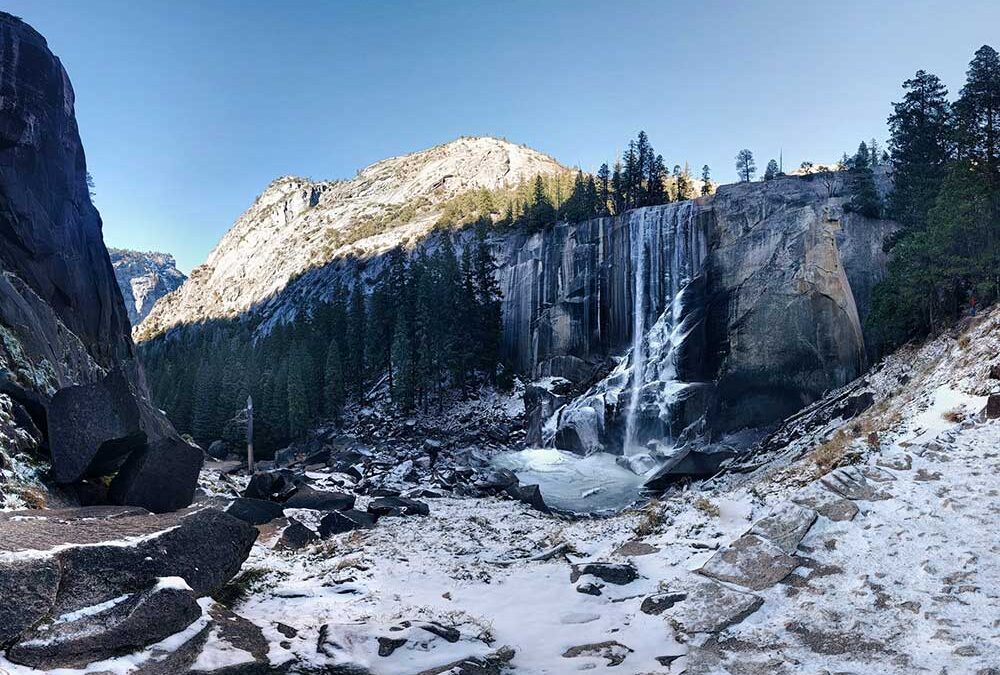Here I am in Death Valley, along with a million others. Covid has driven hordes of people to the outdoors and this weekend includes Valentine’s Day so I imagine that romance plus cabin fever/boredom has made the crowd even denser than it would have been also, of course, winter is traditionally the time to visit so as not to get broiled. I intend to take some walks to favored places, contemplate the mountains on either side of the Valley, read and write—and keep myself as solitary as I can, never much of a problem for me. I needed to be alone, and this camper is my sanctum, one that at the moment, with 30-40 mph winds coursing through, is vibrating and shaking like people overcome by the spirit at a tent revival. I hope tomorrow brings people leaving and taking the wind with them.
*2-14: The road from home to Death Valley is over 600 miles (farther in the winter due to snowed-in passes that push me north for an open route over the Sierra Nevada). It begins with forty miles along Highway One, surely one of the most strikingly beautiful ocean roadways on Earth. (Three years ago, I drove the Great Ocean Highway in Australia and, while entrancing in its own way, it can’t be said to exceed what Highway One offers.) My forty miles took me across waterways flowing into the Pacific, always bordered by mixed redwood forest, maneuvering along dipsey-doodles following what topography demands across ravines and around obstacles, sometimes not far above sea level but often hundreds of feet up with, in the distance, sea stacks, sometimes fog, ocean swells, occasional boats, whales blowing during migration seasons, and usually the marine layer hanging on the horizon. This is one of the natural world gifts that makes me love California.
Then it’s east through the forest and coastal ranges and in a couple hours the dismal Central Valley with its bad air and sad views. It was not always so: In 1868, John Muir walked across it from San Francisco on his way to the Yosemite and described it as an ocean of wildflowers and plentiful wildlife, all victims now of problematic progress. Glad to leave its present incarnation behind, I climb the Sierra foothills through forests of pine, fir, cedar, and their friends. Then as I pass above 6,000’ what I’d been waiting for begins—snow, which has been heavy of late, deeper and deeper, whiter and purer, putting out my eyes in the bright sun’s glare. At spots that offer distant views, I see snow unending. At the top of the pass the road is still icy, a few cars have made unscheduled visits to ditches, vehicles spin wheels and move ahead slowly. Trees hold boughs-full of snow inches deep on every limb—better than a Christmas card. The kind of beauty that moves me between yahooing joy and solemn gratitude. I stay put in my mind to inhale the present scene, understanding that I should be doubly appreciative for knowing that human harms to Earth’s atmosphere will, likely during this century, reduce much of it to ash and the ocean to charnel waters. Love while I can; grieve when I must.
And now it’s down the other side of the mountains, still icy at first, watching the changes as elevation declines, snow diminishes, until as Nevada comes in sight looking out from the far eastern side of the Sierra, it disappears except on the mountains on the other side of the Carson Valley. Turn south along 395, one of my favorite roads anywhere, and dozens more miles of snow all around as I climb to 8,000’; more miles for reveling in generous gifts of life and beauty, then downward again to 4,000’ and the Owens Valley with flatlands to my immediate left abutting the White and Inyo Mountains that parallel on the east Sierra Nevada on the west. About eighty miles later turn east for the final leg to Death Valley. Forest behind me now, climb a bit, then down 3,000’ into the Panamint Valley, up to 5,000’ climbing out of it, and soon back down to sea level (and below sea level but thankfully no sea, which has been left where I last saw it) and camp. What a trip!
The Sierra to DV part of this trip reverses my first encounter with this region. In 1988 I’d come to experience directly the lands I’d read about for two years as I prepared to write my dissertation on a relationship with Nature called Thou by my mentor, Martin Buber, who had died two decades earlier. I’d left Texas and eventually made my way to and through DV and ended up at Tuolumne Meadows in the Yosemite high country. Buber was my philosophical inspiration and Muir spoke for the natural world. His exuberant relation with the Sierra may have made the most changeful difference to me; I’d read a host of accounts of people’s feeling for landscapes but no one spoke with such unrestrained joy, with such eye for detail and immersion in the whole. In some respects I think of him as animist, in others as mystic, as scientist and rhapsodist—in all as so deeply engaged with Nature that our true union with the absolute was known as felt reality. In my weeks of “research” in Yosemite and more southern reaches of the range I sometimes literally followed his footsteps and let my heart be stirred with his, my eyes see with his clarity, my words stretch to encompass his vision and my present experience. He spoke of his early encounters with the place as a baptism and so it felt, like a rebirth (if not quite born again in the Evangelical sense). Thirty plus years later I still look to that period as the initiation into my life’s final half.
Photo by Devon Hernandez on Unsplash


